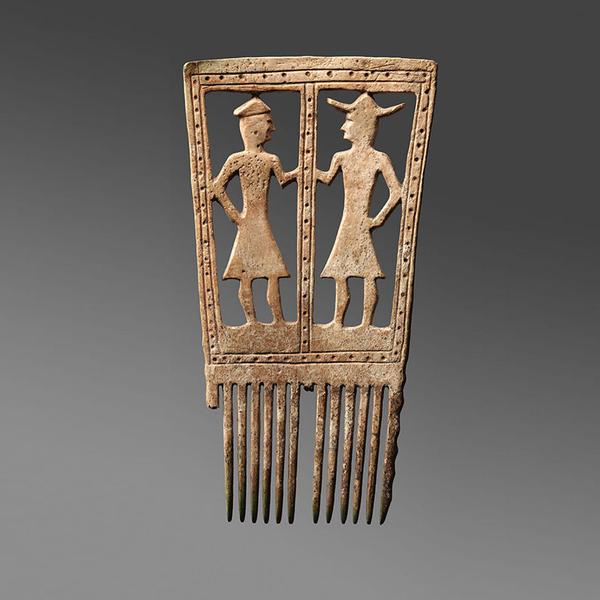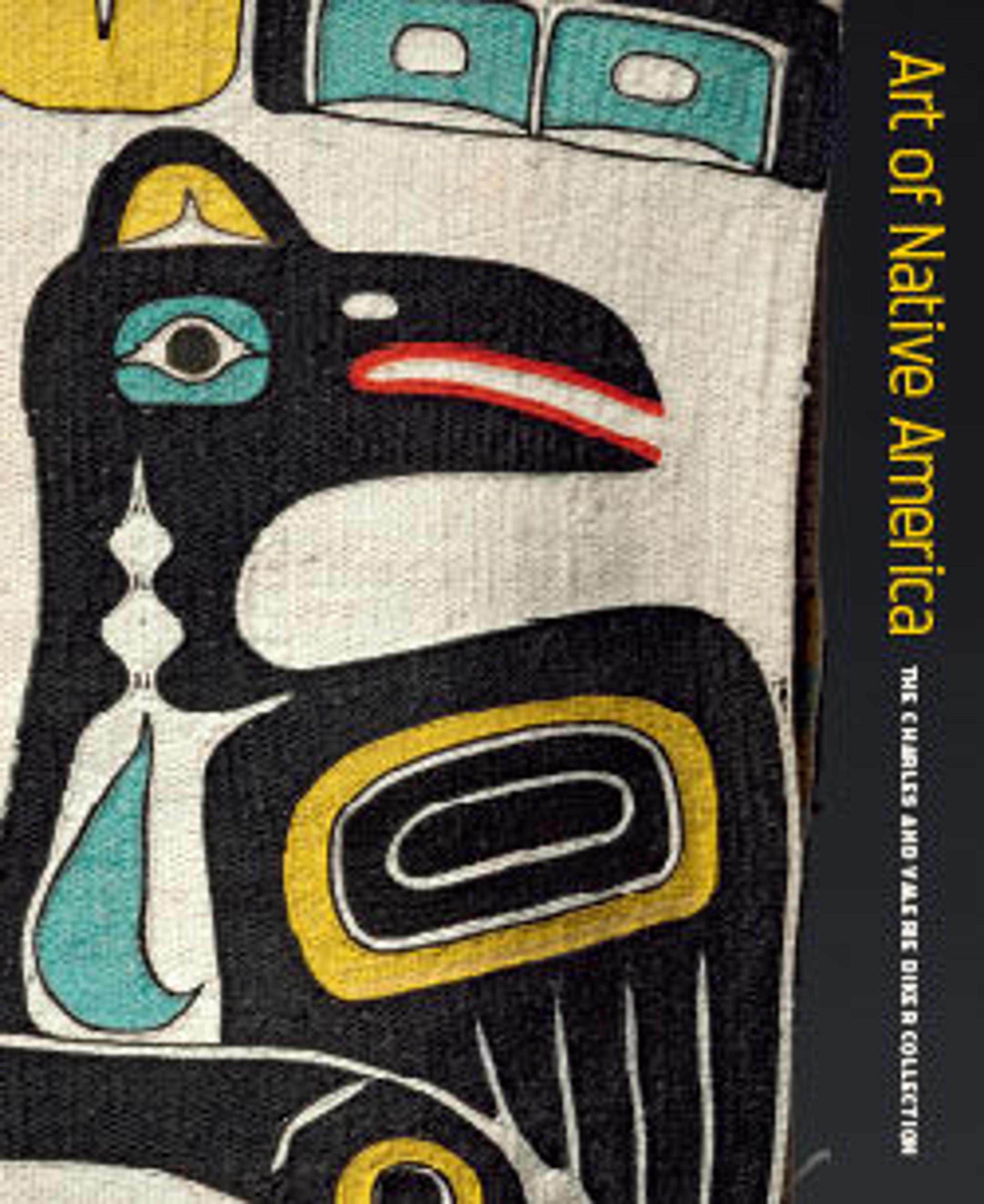Comb
Artwork Details
- Title: Comb
- Date: ca. 1680
- Geography: Possibly made in New York, United States; Possibly made in Pennsylvania, United States
- Culture: Seneca or Susquehannock, Native American
- Medium: Moose antler
- Dimensions: 4 3/4 × 2 9/16 × 1/4 in. (12.1 × 6.5 × 0.6 cm)
- Credit Line: The Charles and Valerie Diker Collection of Native American Art, Gift of Charles and Valerie Diker, 2019
- Object Number: 2019.456.18
- Curatorial Department: The American Wing
Audio

9806: Comb, Haudenosaunee
JOE BAKER: Many times, the art from tribal communities really become diaries and recordings of historical importance…
TANTOO: Joe Baker, of the Lenape Nation…
JOE: They really tell stories. They are narrative in their being. And from them we can follow the course of history.
[SFX: INCLUDE AMBIENT NATURAL OR SYNTH SOUNDS AS APPROPRIATE IN NARRATION BELOW TO MAINTAIN VISITOR ATTENTION]
TANTOO: This 17th century comb fashioned from moose antler, for example, conveys several historical and cultural narratives simultaneously.
You’ll notice, first of all, that the comb depicts two figures, at least one of whom wears a European tricorn hat and frock coat. Their arms are raised, perhaps in friendly greeting.
The delicately carved vignette offers a glimpse into the complex narrative of European contact – as the burgeoning relationships between the Haudenosaunee, or Iroquois, Confederacy and colonial powers brought new opportunities, new technologies, and new conflicts. Even the form of the comb itself may reflect aspects of this contact narrative. Older combs typically feature 4 or 5 thickly fashioned tines. But the many slender tines of this comb suggest that it might have been carved with metal tools, perhaps acquired through European trade.
Beyond the historical resonances, combs like this from the Haudenosaunee Confederacy also carry cultural narratives whose significance would be readily apparent to members of the community. The Haudenosaunee creation story tells of “Sky Woman” who is born after her mother straightens her father’s hair with a comb. The Sky Woman subsequently falls to Earth and gives birth to the human race.
More Artwork
Research Resources
The Met provides unparalleled resources for research and welcomes an international community of students and scholars. The Met's Open Access API is where creators and researchers can connect to the The Met collection. Open Access data and public domain images are available for unrestricted commercial and noncommercial use without permission or fee.
To request images under copyright and other restrictions, please use this Image Request form.
Feedback
We continue to research and examine historical and cultural context for objects in The Met collection. If you have comments or questions about this object record, please contact us using the form below. The Museum looks forward to receiving your comments.
